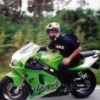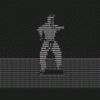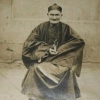Contrary to popular belief, CBD is also supposed to promote wakefulness[1] without altering locomotion [see below, although did find one study inhibiting hyperlocomotion]. CBN may also play a role. It's anxiogenic, demotivating, psychotomimetic (weakly). It might not be as unpleasant as I just described, and did find a couple sources saying it's higher in indicas. But if you look on that chart I posted, it seems to suggest sativa is higher in myrcene. So really, with lower CBD, lower THCV, higher myrcene, everything would suggest sativa is technically more sedating!? Maybe the CBN just overwhelms and explains everything, aha.
Prog Neuropsychopharmacol Biol Psychiatry. 2013 Mar 5;41:30-5.
Cannabidiol exhibits anxiolytic but not antipsychotic property evaluated in the social interaction test.
Almeida V1, Levin R, Peres FF, Niigaki ST, et al.
Abstract
Cannabidiol (CBD), a non-psychotomimetic compound of the Cannabis sativa, has been reported to have central therapeutic actions, such as antipsychotic and anxiolytic effects. We have recently reported that Spontaneously Hypertensive Rats (SHRs) present a deficit in social interaction that is ameliorated by atypical antipsychotics. In addition, SHRs present a hyperlocomotion that is reverted by typical and atypical antipsychotics, suggesting that this strain could be useful to study negative symptoms (modeled by a decrease in social interaction) and positive symptoms (modeled by hyperlocomotion) of schizophrenia as well as the effects of potential antipsychotics drugs. At the same time, an increase in social interaction in control animals similar to that induced by benzodiazepines is used to screen potential anxiolytic drugs. The aim of this study was to investigate the effects of CBD on social interaction presented by control animals (Wistar) and SHRs. The lowest dose of CBD (1mg/kg) increased passive and total social interaction of Wistar rats. However, the hyperlocomotion and the deficit in social interaction displayed by SHRs were not altered by any dose of CBD. Our results do not support an antipsychotic property of cannabidiol on symptoms-like behaviors in SHRs but reinforce the anxiolytic profile of this compound in control rats.
Br J Pharmacol. 2015 Apr;172(7):1783-91.
Cannabidiol fails to reverse hypothermia or locomotor suppression induced by Δ(9) -tetrahydrocannabinol in Sprague-Dawley rats.
Taffe MA1, Creehan KM, Vandewater SA.
Abstract
BACKGROUND AND PURPOSE:
Growing evidence shows cannabidiol (CBD) modulates some of the effects of Δ(9) -tetrahydrocannabinol (THC). CBD is a constituent of some strains of recreational cannabis but its content is highly variable. High CBD strains may have less memory-impairing effects than low-CBD strains and CBD can reverse behavioural effects of THC in monkeys. CBD/THC interactions in rodents are more complicated as CBD can attenuate or exacerbate the effects of THC. This study was undertaken to determine if CBD could reverse hypothermia or hypolocomotor effects caused by THC in rats.
EXPERIMENTAL APPROACHES:
Male Sprague-Dawley rats were prepared with radiotelemetry devices and then given doses of THC (10-30 mg·kg(-1) , i.p.) with or without CBD. Experiments determined the effect of simultaneous or 30 min pretreatment with CBD in a 1:1 ratio with THC, as well as the effect of CBD in a 3:1 ratio. Additional experiments determined the effects of pretreatment with the cannabinoid CB1 receptor antagonist SR141716 (rimonabant).
KEY RESULTS:
CBD did not attentuate THC-induced hypothermia or hypolocomotion but instead exaggerated these effects in some conditions. The antagonist SR141716 blocked hypolocomotor effects of THC for the first hour after injection and the hypothermia for 6 h; thus validating the pharmacological model.
CONCLUSIONS AND IMPLICATIONS:
There is no evidence from this study that elevated CBD content in cannabis could provide protection from the physiological effects of THC, in rats.
After conversion to human dose, is 54mg (1/12 * 10mg/kg * 65kg). This is for the lowest dose used! The highest one is 200mg/kg, or 20x higher.
Even allowing a generous 3%, our volunteer would need to smoke 1800mg of cannabis. Don't know about you, but that amount lasts me 48 hrs. I mean, at least 36. Further, myrcene's half life is 5 hrs (285min to be exact), while THC's is closer to 60min.
For 15% THC and 3% myrcene, we have % effective dose curves of 5*(1/2)^(t) and (1/2)^(t/5), where t is time in hours. You can see (at least in the acute user) during the first 2.5 or 3 hours, the THC (red) dominates (not only that, it's effective at much less than 54mg, closer to 26mg, so multiply that curve by 2)! The chronic user is a different story, with the convolution operation (which models radioactive dumps, where you keep tossing radioactive waste to the sample). The myrcene builds up to a considerable extent in the chronic user. But still, in the immediate high, about 90-120 minutes, the % of effective dose reached with myrcene vs. THC is still much lower.
Phytomedicine. 2002 Dec;9(8):709-14.
Central effects of citral, myrcene and limonene, constituents of essential oil chemotypes from Lippia alba (Mill.) n.e. Brown.
do Vale TG1, Furtado EC, Santos JG Jr, Viana GS.
Abstract
Citral, myrcene and limonene (100 and 200 mg/kg body wt., i.p.), constituents of essential oils from Lippia alba chemotypes, decreased not only the number of crossings but also numbers for rearing and grooming, as measured by the open-field test in mice. Although muscle relaxation detected by the rota rod test was seen only at the highest doses of citral (200 mg/kg body wt.) and myrcene (100 and 200 mg/kg body wt.), this effect was observed even at the lowest dose of limonene (50 mg/kg body wt.). Also, citral and myrcene (100 and 200 mg/kg body wt.) increased barbiturate sleeping time as compared to control. Limonene was also effective at the highest dose, and although citral did not increase the onset of sleep, it increased the duration of sleep, which is indicative of a potentiation of sleeping time. Citral (100 and 200 mg/kg body wt.) increased 2.3 and 3.5 times, respectively, the barbiturate sleeping time in mice. Similar effects were observed for myrcene and limonene at the highest dose (200 mg/kg body wt.) which increased the sleeping time around 2.6 times. In the elevated-plus maze, no effect was detected with citral up to 25 mg/kg body wt., while at a high dose it decreased by 46% the number of entries in the open arms. A smaller but significant effect was detected with limonene (5 mg/kg body wt.). While myrcene (10 mg/kg body wt.) decreased [number of entries] only by 22% the number of entries in the open arms, this parameter was decreased by 48% at the highest dose. Our study showed that citral, limonene and myrcene presented sedative as well as motor relaxant effects. Although only at the highest dose, they also produced a potentiation of the pentobarbital-induced sleeping time in mice, which was more intense in the presence of citral. In addition, neither of them showed an anxiolytic effect, but rather a slight anxiogenic type of effect at the higher doses.

Edited by gamesguru, 27 October 2016 - 09:57 PM.






















































